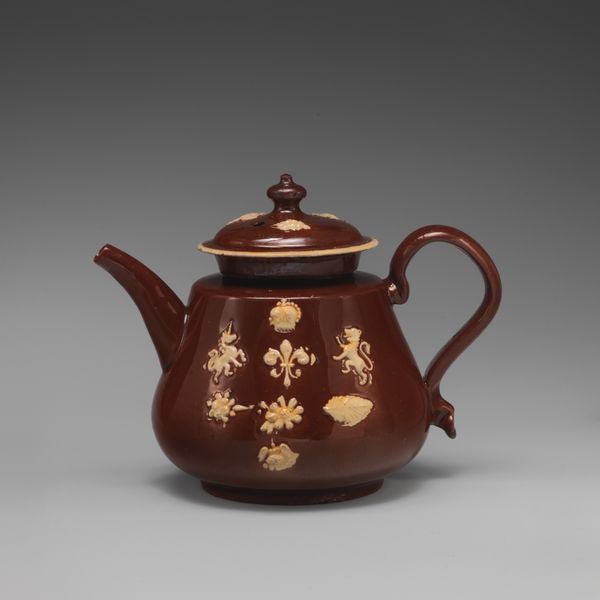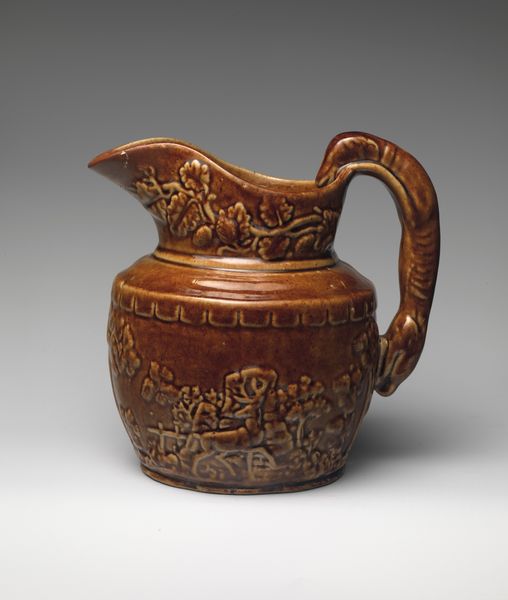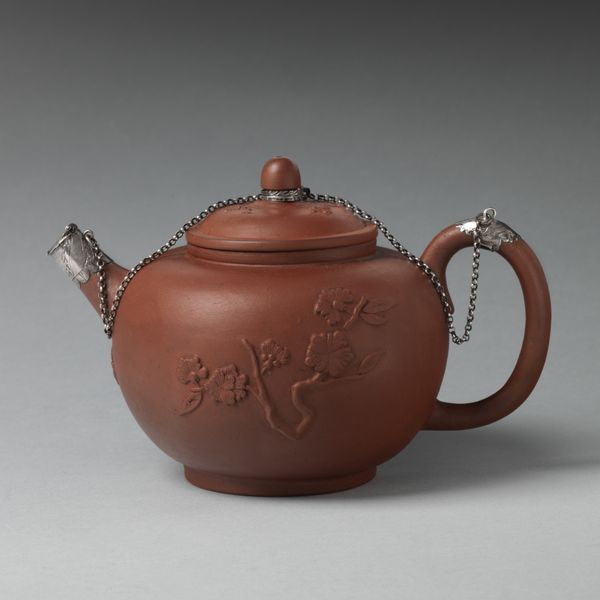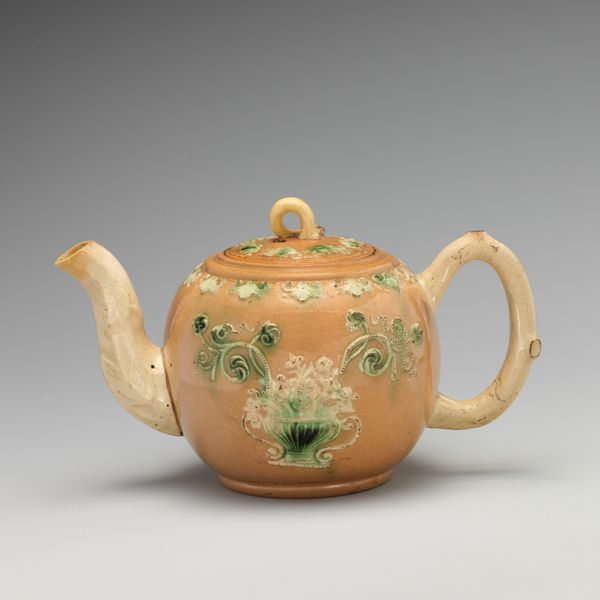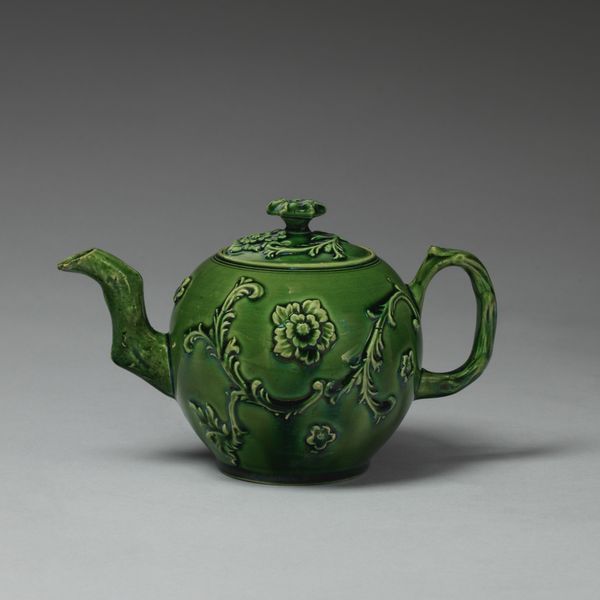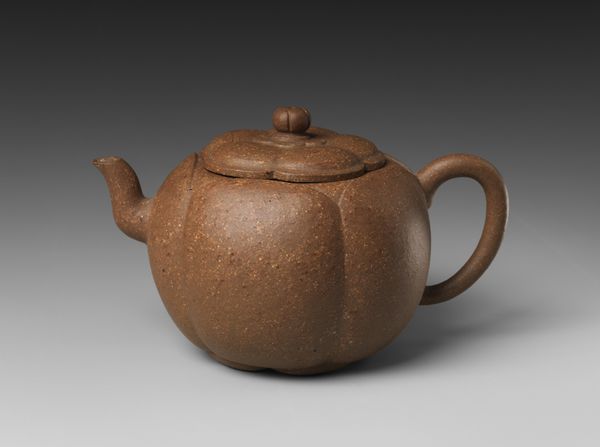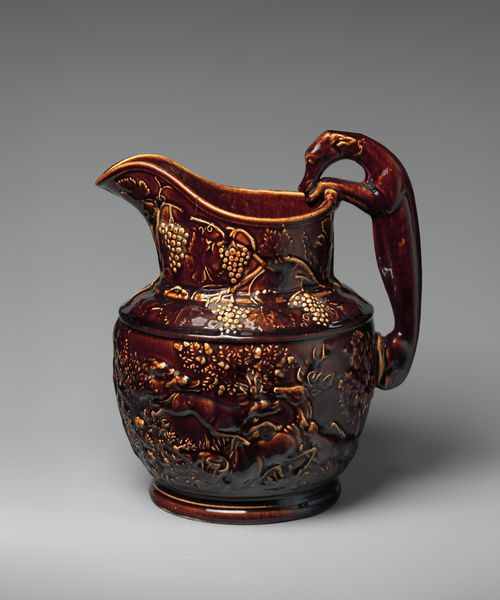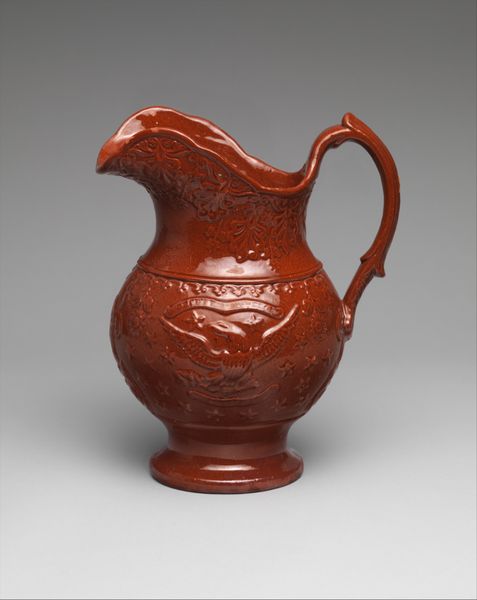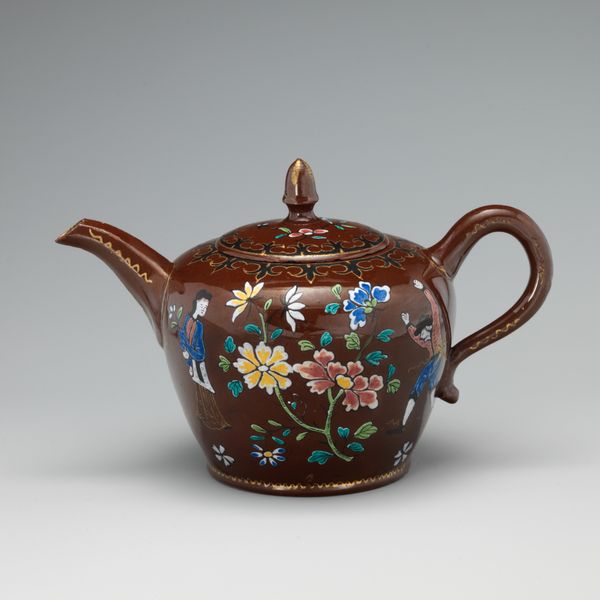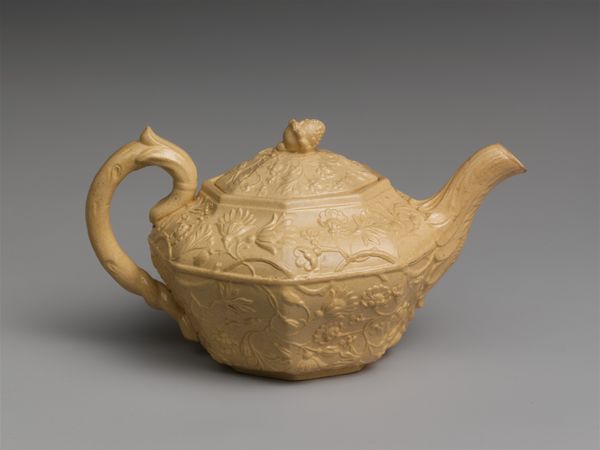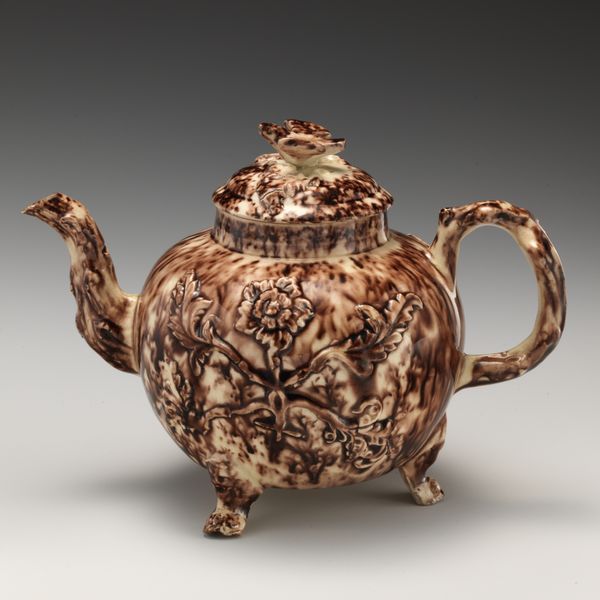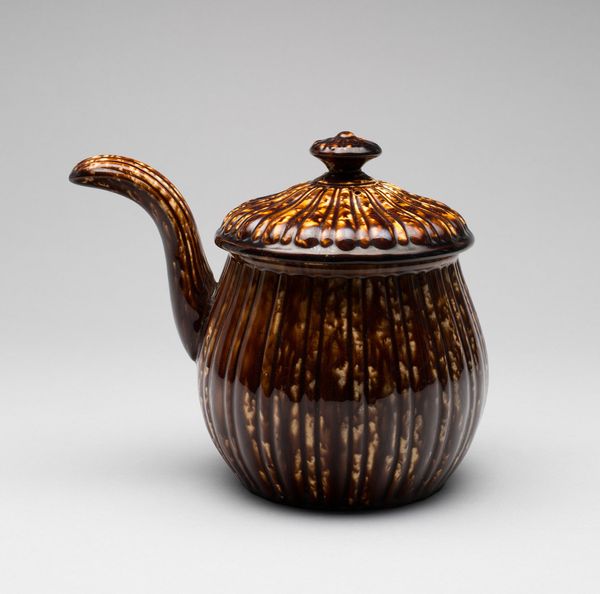
ceramic, earthenware, sculpture
#
baroque
#
ceramic
#
earthenware
#
sculpture
#
decorative-art
Dimensions: Height: 4 1/4 in. (10.8 cm)
Copyright: Public Domain
Curator: Standing before us is an intriguing teapot crafted by John Astbury between 1740 and 1750. Currently residing at the Metropolitan Museum of Art, this piece exemplifies Baroque decorative arts, constructed from earthenware and showcasing sculptural qualities. Editor: It’s surprisingly menacing, isn’t it? The rich brown colour combined with the beastly handle and spout gives it this strange sense of dark elegance, almost gothic, though I suppose Baroque leans in that direction generally. Curator: The contrasting matte glaze of the reddish-brown body against the glossy relief decorations certainly generates visual tension. We observe a heraldic shield front and center, flanked by what appears to be a lion rampant and another perhaps a Pegasus motif set above floral and foliate appliqués. The dragon handle and bird-shaped knob create striking animalistic focal points as well. Editor: Absolutely. And I'm drawn to the juxtaposition of refinement and raw power— the dainty vessel meant for brewing and pouring tea, adorned with creatures that suggest strength. It almost feels like a secret language about social standing or even political leanings communicated through something as ordinary as tea service. What's brewing beneath the surface, so to speak? Curator: Indeed. The symmetry is pronounced, yet it doesn't overwhelm the slightly whimsical character imparted by those sculptural additions. Astbury appears to be making a very precise, sophisticated statement while leaving space for humor. Editor: You know, it makes me wonder about the person who first owned this teapot. Were they aware of these layered meanings, or did they simply appreciate its craftsmanship? What stories did it witness around the table, tucked away inside it's ceramic core? It would be such fun to imagine it’s secrets! Curator: An apt point, especially when considering that a vessel designed for warmth and sharing would be also subtly signaling one's status or affiliations. This particular teapot invites us to ponder these multifaceted aspects of eighteenth-century material culture. Editor: It's a powerful thing, isn't it, to transform clay and pigment into something that speaks volumes centuries later? A silent yet resonant commentary that links past, present, and those cups of tea to come!
Comments
No comments
Be the first to comment and join the conversation on the ultimate creative platform.
